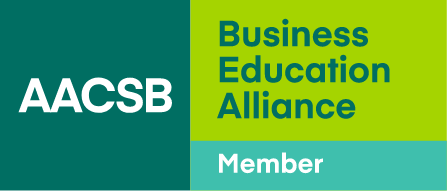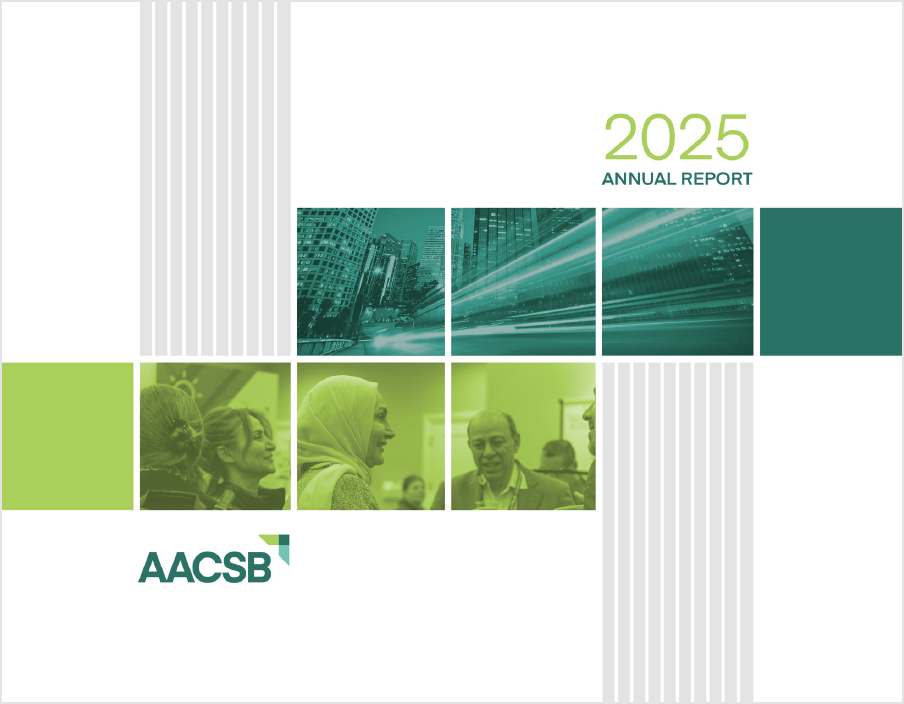Fueling Innovation Through Collaboration
- Faculty serve as essential liaisons, ensuring curricula balance theoretical rigor with practical applications that address real business challenges.
- Industry collaboration deepens experiential learning through multiple innovative formats, from internships to executive-led courses and mentorship programs.
- Emerging technologies, including AI, offer new ways to connect students, faculty, and industry while expanding learning formats.
Transcript
Arthur Perham: [00:13] What our partners should know about partnering with a university like us is that they can help us bridge the gap. Our students need experiences, and businesses need employees who are ready to hit the ground running and provide benefits that support their businesses and help their businesses grow.
Jessica Cooley: [00:32] Universities are so eager to engage with corporations in a number of ways. Whether it's research projects or consulting projects, companies always have a great need for market research.
[00:44] Our students are often the next customer that they're trying to serve. So, what are some ways that we can help you integrate with some of our classes beyond just internships or early careers and deliver value to you now that will serve you in the future as you look to develop your products for your next customer.
A university can serve as a great playground or sandbox.
[01:06] Dig deeper with universities. Our students are so eager to get involved and test things.
[01:13] Also, a university can serve as a great playground or sandbox for universities to test something new in a really safe way and get some feedback right away from students, who can serve as that potential customer that they're trying to test with.
Hümeyra Adigüzel: [01:31] Companies should actively co-design courses to ensure relevance and provide executives and professionals to deliver courses and mentorship sessions.
[01:45] Faculty act as liaisons between academia and industry to ensure that courses include both theoretical and experiential learning activities.
It's important to continually innovate in our industry partnerships.
Amy Zeng: [01:57] Because collaborating with industry partners is the best way to deepen experiential learning. There are many ways in which experiential learning can take on. Therefore, there are multiple ways, multiple areas for business schools to continue to innovate.
Joyce van der Laan: [02:13] We think it's important to continually innovate in our industry partnerships.
[02:17] We are collaborating with business aggregators, such as the Metropolitan Business League, and we will work with other groups as well, because this allows us to stay involved in the community and understand what the business is in our community, what they're dealing with, and what their issues are.
[02:35] We would also like to have long-term partners who are willing to work with us on expanding our offerings and exploring other opportunities, such as AI tool building and sustainability analysis.
AI is going to challenge a lot of curriculum design, but it will also create opportunities for connections.
Elodie Huré: [02:48] Business schools and industry have a lot of space to innovate with AI because I think we tackle similar challenges. We, as organizations ourselves, need to incorporate AI in our organizational models.
[03:05] But also, AI is going to challenge a lot. The way people work and the ability of business schools to teach students how to learn are important, systemic thinking is very important, and ethical considerations about the use of AI.
[03:24] AI is probably going to challenge a lot of curriculum design, but it will also create opportunities for connections between the industrial world and the business school world.
[03:36] So that we can also create new formats, shorter certifications, or blended experiences between the corporate world and the business school world, allowing us to be more flexible and enabling students and professionals to acquire this knowledge.






